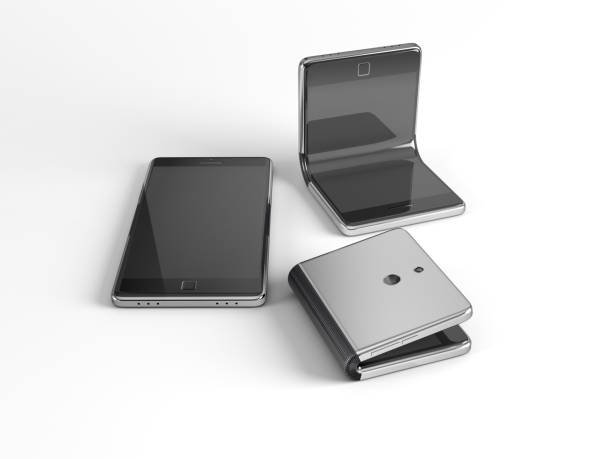Introduction
In recent years, the mobile phone industry has witnessed a significant advancement with the introduction of foldable phones. These innovative devices offer a unique form factor that combines the portability of a smartphone with the expansive screen real estate of a tablet. In this article, we will delve into the world of foldable phones, exploring their features, advantages, and disadvantages. From their flexible displays and multitasking capabilities to their potential impact on productivity and entertainment, we will examine the pros and cons of this emerging technology.
Section 1: Understanding Foldable Phone Technology
1.1 Flexible Displays: Discussing the underlying technology behind foldable phones, including the use of flexible OLED or AMOLED displays that can bend and fold without damage.
1.2 Hinge Mechanisms: Exploring the different hinge mechanisms used in foldable phones, such as the clamshell design or the book-style fold, and their impact on durability and usability.
1.3 Multitasking and App Continuity: Highlighting the unique multitasking capabilities of foldable phones, where users can seamlessly transition between different app layouts and take advantage of split-screen or multi-window functionality.
1.4 Durability and Design Considerations: Discuss the challenges of creating durable foldable phones, including the need for robust materials, protective layers, and rigorous testing to ensure long-term reliability.
1.5 Software Optimization: Exploring the importance of software optimization to maximize the potential of foldable phones, including adaptive user interfaces, app compatibility, and developer support.
Section 2: Advantages of Foldable Phones
2.1 Expanded Screen Real Estate: Discuss how foldable phones offer larger displays when unfolded, providing a more immersive experience for content consumption, gaming, and productivity tasks.
2.2 Enhanced Productivity: Highlighting the potential for increased productivity with foldable phones, as users can multitask more efficiently, view multiple apps simultaneously, and take advantage of larger screens for document editing or creative work.
2.3 Portability and Flexibility: Exploring the portability and flexibility of foldable phones, as they can easily transform from a compact form factor to a larger screen size, making them convenient for on-the-go use and providing versatility for different tasks.
2.4 Unique User Experience: Discussing the novel user experience offered by foldable phones, as users can interact with their devices in new ways, such as using half of the unfolded screen as a keyboard while watching a video on the other half.
2.5 Future Potential: Highlighting the potential for further innovation and advancements in foldable phone technology, such as the integration of new features like stylus support, improved multitasking capabilities, and enhanced durability.
Section 3: Disadvantages and Challenges
3.1 High Cost: Discussing one of the primary challenges of foldable phones, which is their higher price point compared to traditional smartphones, due to the complexity of the technology and limited production volumes.
3.2 Fragility and Durability Concerns: Addressing concerns regarding the durability of foldable phones, as the foldable displays may be more susceptible to damage from accidental drops, pressure, or dust particles entering the hinge mechanism.
3.3 Bulkiness and Weight: Exploring the potential trade-off between screen size and portability, as foldable phones may be bulkier and heavier than traditional smartphones, making them less pocket-friendly and potentially cumbersome to handle.
3.4 App Compatibility and Optimization: Discuss the challenges faced by developers in optimizing their apps for foldable phones, considering the varying screen sizes, aspect ratios, and unique features of foldable devices.
3.5 Limited Market Availability: Highlighting the limited availability of foldable phones in the market, as they are still considered a niche product with a smaller customer base compared to traditional smartphones.
Section 4: Future Outlook and Adoption
4.1 Growing Market Interest: Discussing the increasing interest and investment in foldable phone technology by leading smartphone manufacturers, indicating a potential shift towards wider adoption and market acceptance in the future.
4.2 Technological Advancements: Exploring the potential advancements in foldable phone technology, such as the development of more durable and flexible display materials, improved hinge mechanisms, and enhanced software optimization.
4.3 Expanding Use Cases: Highlighting the potential for foldable phones to cater to specific use cases, such as gaming, content creation, or professional productivity, as they offer unique capabilities and an immersive user experience.
4.4 Affordability and Mass Production: Discussing the future potential for foldable phones to become more affordable as production volumes increase, making them accessible to a broader range of consumers.
4.5 Consumer Adoption and Acceptance: Addressing the importance of consumer adoption and acceptance in driving the future growth of foldable phones, as positive feedback and demand can encourage further innovation and investment in the technology.
Conclusion
Foldable phones represent a significant advancement in mobile phone technology, offering users a unique combination of portability and expanded screen real estate. With their flexible displays, multitasking capabilities, and potential for increased productivity, these devices redefine the user experience. However, challenges such as high cost, durability concerns, and limited market availability need to be addressed for wider adoption. As the technology continues to evolve and mature, and as manufacturers invest in research and development, we can expect foldable phones to become more accessible, durable, and versatile. The future holds promising opportunities for this emerging technology to revolutionize the way we interact with our mobile devices, opening doors to new possibilities in productivity, entertainment, and innovation.
